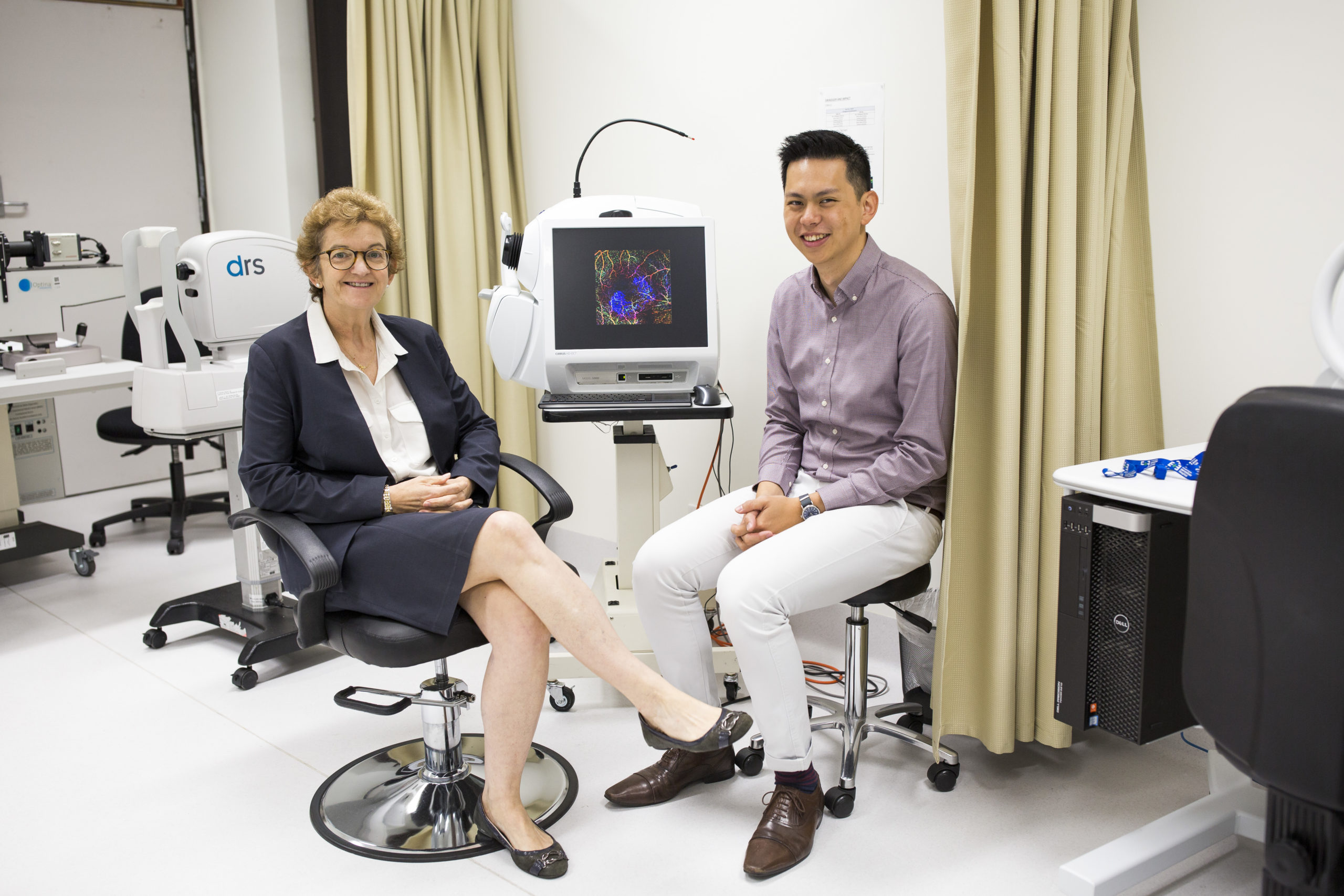NEWS
International research recognition
Dr Zhichao Wu’s ongoing work to improve treatments for people with age-related degeneration (AMD) and glaucoma has received a major international award.
Dr Zhichao Wu’s efforts to find better treatments for age-related macular degeneration and glaucoma have been recognised with a major international award for early career optometrists.
Dr Wu’s work has already led to improved detection methods and expedited the discovery of possible treatments for early eye diseases.
Honored for his early career impact
In 2020 he was awarded the prestigious American Academy of Optometry Irvin M and Beatrice Borish Award.
The winner is described as an outstanding early-career scientist or clinician-scientist to have shown exceptional promise conducting independent research related to etiology, prevention, detection, diagnosis, or management of clinical ocular disorders.

Dr Zhichao Wu works closely with Professor Robyn Guymer AM and the Macular Research Unit.
A drive to improve research
It was during his early years in clinical practice at the Australian College of Optometry that Dr Wu fully appreciated the impact of age-related macular degeneration.
“What really struck me was when I first saw a person that came in with bleeding in her eye because of AMD,” he recalls. “Surely in the 21st century we should be able to do something to prevent this from happening.”
Continuing impressive work
Dr Wu wants to help the one in seven Australians aged over 50 with AMD, which has no cure and affects the macula – the central part of the retina at the back of the eye.
He is using new technology to assess deposits in the eye that cause AMD, and also worked with CERA Deputy Director Professor Robyn Guymer AM, and other collaborators to trial nanosecond laser technology, which hits cells in the eye with light that is thought to trigger healing.
Dr Wu is also undertaking research to prevent irreversible vision loss from glaucoma.*
*This story first appeared in the CERA Annual Review for 2020.
